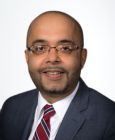Depression
Shared Decision-Making Engages Patients With Depression
Provider-patient teams can help patients navigate their treatment options.
Posted February 23, 2022 Reviewed by Lybi Ma
There’s a wide range of options available to treat depression. But that doesn’t necessarily make it easier for about a third of adult patients with depression to overcome the condition, which can be chronic for many.
For approximately 2.8 million people—or 1.1 percent of the adult population in the United States—treatment-resistant depression (TRD) is a reality.
It also can be difficult to come by a clear definition of the condition, though the Food and Drug Administration “considers patients to have TRD if they have major depressive disorder and, despite at least two trials of antidepressant treatment given at adequate doses for an adequate duration in the current episode, they have not responded to treatment.”
Two failed courses of medicine can feel endless to someone who’s suffering. Those attempts represent time spent struggling. Seeking, trying, and failing to manage depression can be draining and chip away at hope. But when patients work with providers who embrace shared decision-making to explore treatment options, it can change the course of depression and make a positive difference.
The power of shared decision-making
Shared decision-making involves health care providers and patients working together to identify specific treatment goals and discuss how to attain them. Patients do not passively undergo treatment; they play a meaningful role in their care.
Including patients in their own treatment may make it more likely that they’ll complete therapy homework and adhere to a medication regimen, one report has found. Shared decision-making can facilitate the development of more effective treatment plans, which is key with a chronic condition that requires ongoing participation and investment.
It adds a layer of complexity when depression becomes treatment-resistant. Patients already have exhausted some treatment options, and others may require newer approaches or a variety of strategies, each of which requires a different patient commitment.
With several alternative treatments now available for TRD, questions abound. The treatment options range from psychotherapy, trials of medications or a combination of medications, and newer psychedelic agents such as esketamine and brain stimulation.
Can ketamine help?
Ketamine is a medication primarily used for anesthesia. However, in sub-anesthetic doses, it has emerged as an exciting new treatment for TRD (and suicidality), often with a very rapid response rate. To know whether ketamine is right for a patient, it’s important for patients to consider the following questions with a knowledgeable, trusted medical, mental health partner.
How does esketamine work?
Esketamine, which is FDA-approved when given as a nasal spray, may help grow synapses (connections) in the brain that are lost because of depression. It also may activate a neurotransmitter called glutamate in the brain.
How are ketamine and esketamine administered?
Esketamine is given to patients intranasally. Medical supervision is necessary when a patient is undergoing esketamine treatments.
When patients are given esketamine nasally, it’s usually done twice a week for one to four weeks and is covered by insurance. After that, it’s given weekly for another four weeks and goes down to once every other week. Patients taking esketamine intranasally can still be on an antidepressant.
Ketamine can be given intravenously. Ketamine intravenous infusions, which are generally not covered by insurance, occur on a different schedule. To start, they’re usually administered six times over the course of three weeks. Patients on ketamine infusions aren’t typically taking antidepressants, too. Infusions are typically more effective than esketamine taken via a nasal inhaler.
What are the side effects of taking esketamine?
Some patients who take esketamine experience transient feelings of unreality, sensory distortions, a feel-good “buzz,” sedation, and a possible blood pressure increase.
Exploring brain stimulation
Brain stimulation is another effective treatment for TRD. The oldest form of brain stimulation is electroconvulsive therapy (ECT). Despite inaccurate depictions of the treatment, ECT has a 50-70 percent response rate. Drawbacks can include that it requires anesthesia and may cause side effects such as temporary memory deficits, important points that providers and patients should discuss.
Patient-provider teams also may want to discuss temporal magnetic stimulation (TMS), a type of brain stimulation that has been FDA-approved to treat depression for about two decades. With about 60 percent response rate, it’s not as effective as ECT, but it doesn’t require anesthesia. This involves patients wearing a fitted hat that causes a tapping sensation on the scalp for each 40- to 45-minute session—typically four or five sessions per week for several weeks. Health insurance companies largely cover TMS.
When decision-making is shared, these treatments may be used alongside others, such as medicine and, of course, talk therapy. While most medicines alone are about 60 percent effective, they may be more effective when patients and providers find an alternative treatment or a combination of treatments that works for that individual patient’s depression.
With so many potential treatments on the market, it’s important for patients suffering from treatment-resistant depression to have a knowledgeable, trusted partner. Patients often need providers who will help map out diagnosis, treatment, and recovery in a detailed way. Though some patients may feel powerless over their condition, shared decision-making has the potential to help them regain some of that power so they can engage in their own treatment and in their future.




